John the Ripper

John the Ripper John the Ripper is a password cracking tool. It can be used to recover lost passwords. John the Ripper can be used to test for weak passwords.
Cyber Kill Chains
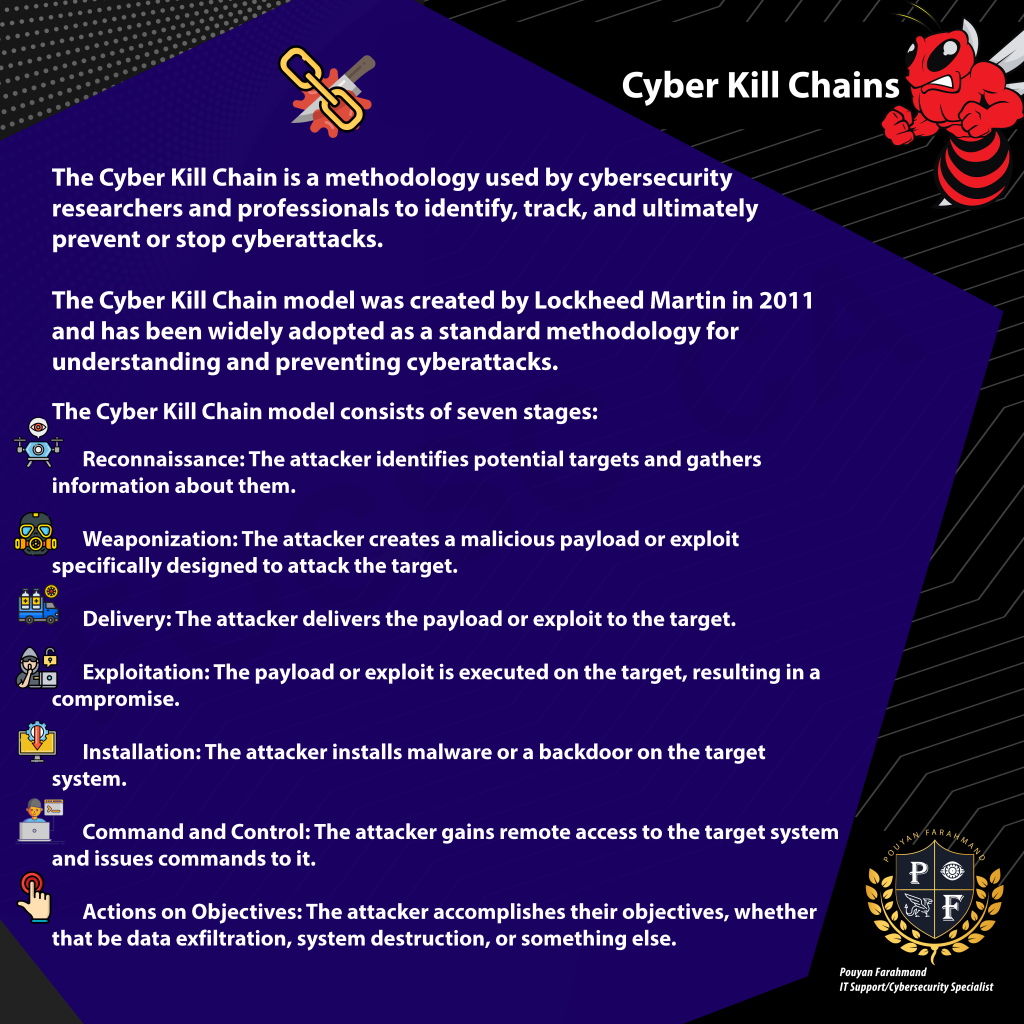
Cyber Kill Chains The Cyber Kill Chain is a methodology used by cybersecurity researchers and professionals to identify, track, and ultimately prevent or stop cyberattacks. The Cyber Kill Chain model was created by Lockheed Martin in 2011 and has been widely adopted as a standard methodology for understanding and preventing cyberattacks. The Cyber Kill Chain model consists of seven stages: 1. Reconnaissance: The attacker identifies potential targets and gathers information about them. 2. Weaponization: The attacker creates a malicious payload or exploit specifically designed to attack the target. 3. Delivery: The attacker delivers the payload or exploit to the target. 4. Exploitation: The payload or exploit is executed on the target, resulting in a compromise. 5. Installation: The attacker installs malware or a backdoor on the target system. 6. Command and Control: The attacker gains remote access to the target system and issues commands to it. 7. Actions on Objectives: The attacker accomplishes their objectives, whether that be data exfiltration, system destruction, or something else. Secure Your Cyber Security: A Guide to CIA (Confidentiality, Integrity, & Availability)
Metasploit
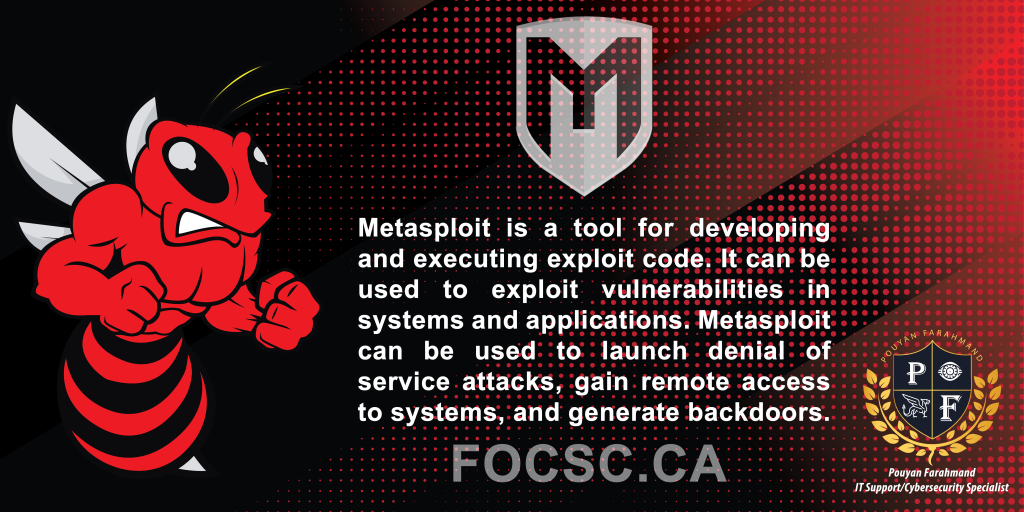
Metasploit Metasploit is a tool for developing and executing exploit code. It can be used to exploit vulnerabilities in systems and applications. Metasploit can be used to launch denial of service attacks, gain remote access to systems, and generate backdoors. Metasploit Explained: A Powerful Tool for Developing and Executing Exploit Code
Denial of Service
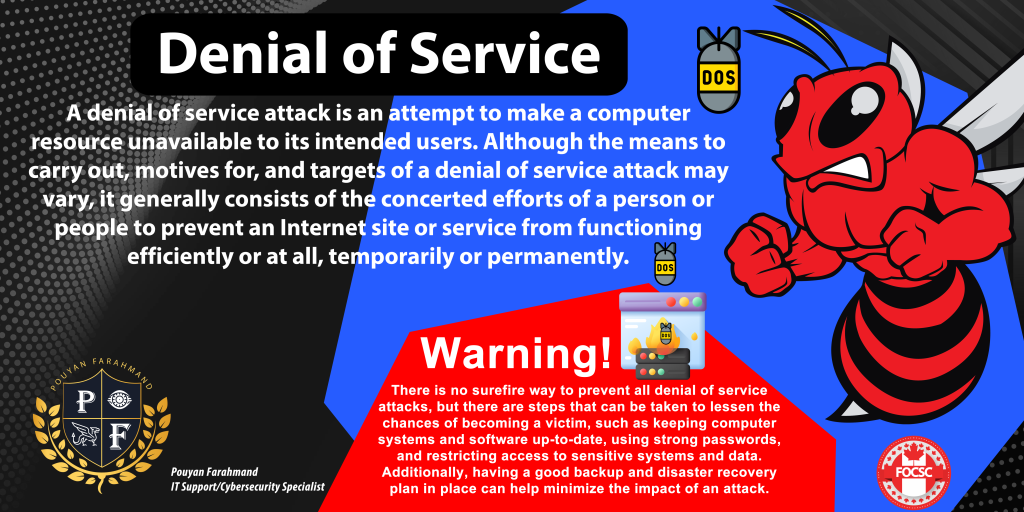
Denial of Service A denial of service attack is an attempt to make a computer resource unavailable to its intended users. Although the means to carry out, motives for, and targets of a denial of service attack may vary, it generally consists of the concerted efforts of a person or people to prevent an Internet site or service from functioning efficiently or at all, temporarily or permanently. Warning! There is no surefire way to prevent all denial of service attacks, but there are steps that can be taken to lessen the chances of becoming a victim, such as keeping computer systems and software up-to-date, using strong passwords, and restricting access to sensitive systems and data. Additionally, having a good backup and disaster recovery plan in place can help minimize the impact of an attack. Keep Your Systems Secure: Protect Yourself from Denial of Service Attacks
Removing Malware
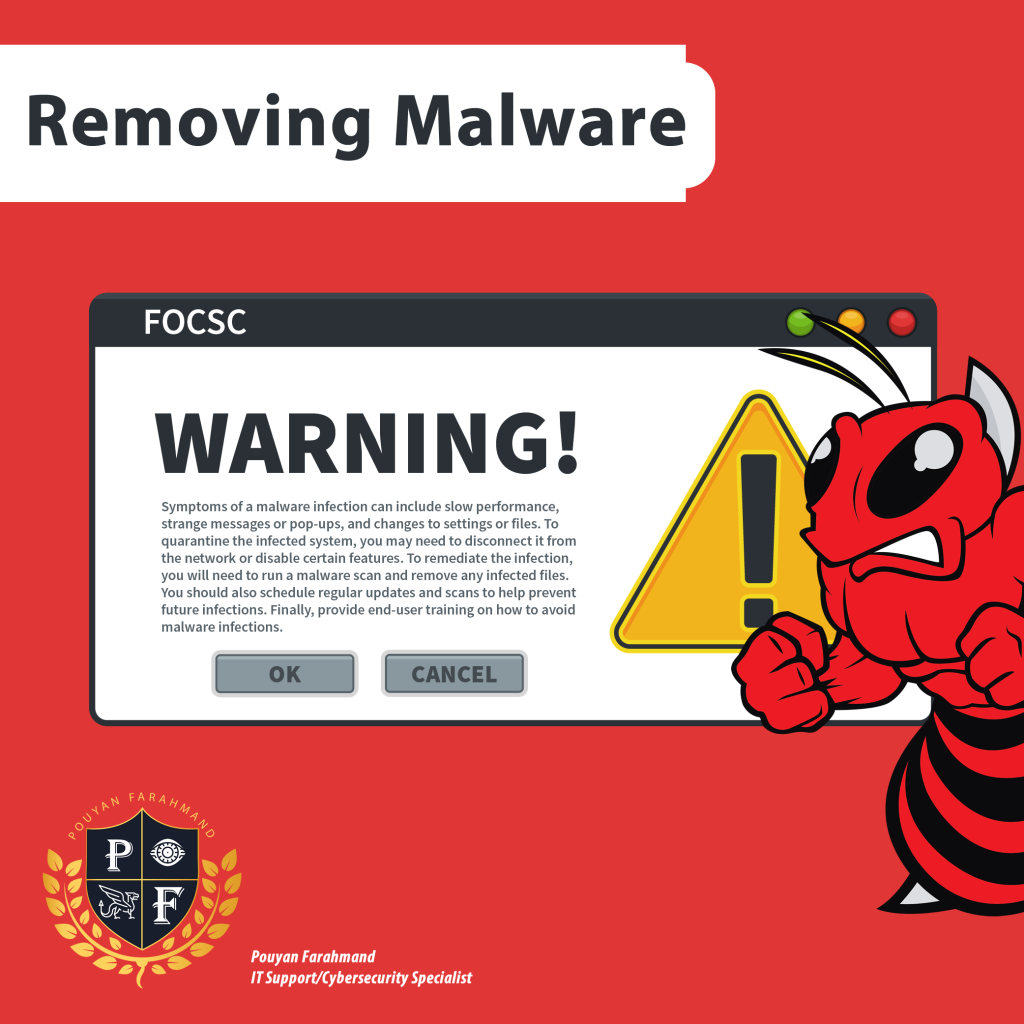
Removing Malware Symptoms of a malware infection can include slow performance, strange messages or pop-ups, and changes to settings or files. To quarantine the infected system, you may need to disconnect it from the network or disable certain features. To remediate the infection, you will need to run a malware scan and remove any infected files. You should also schedule regular updates and scans to help prevent future infections. Finally, provide end-user training on how to avoid malware infections. Protect Your Computer from Malware: Quick & Easy Remediation Steps
Botnet
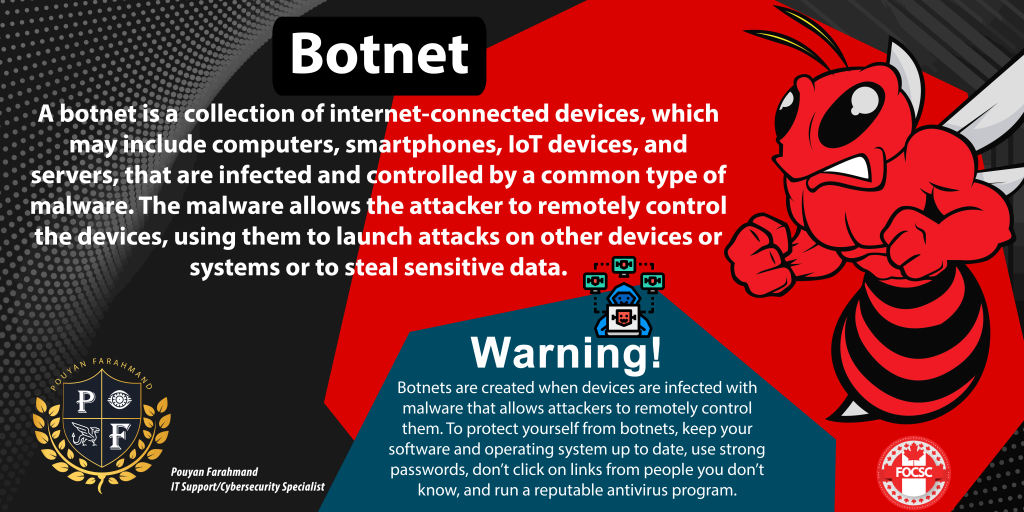
Botnet A botnet is a collection of internet-connected devices, which may include computers, smartphones, IoT devices, and servers, that are infected and controlled by a common type of malware. The malware allows the attacker to remotely control the devices, using them to launch attacks on other devices or systems or to steal sensitive data. Warning! Botnets are created when devices are infected with malware that allows attackers to remotely control them. To protect yourself from botnets, keep your software and operating system up to date, use strong passwords, don’t click on links from people you don’t know, and run a reputable antivirus program. Protecting Yourself from Botnets: 4 Steps to Keep Your Devices Safe
Hping

Hping Hping is a free and open-source packet generator and analyzer for the TCP/IP protocol. It can be used for security auditing and testing of firewalls and networks.
Cookie theft
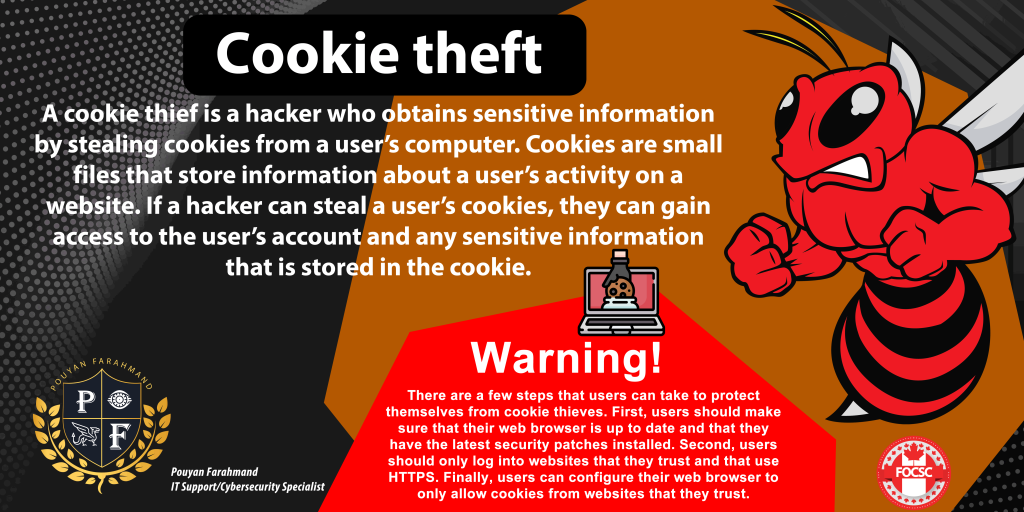
Cookie theft A cookie thief is a hacker who obtains sensitive information by stealing cookies from a user’s computer. Cookies are small files that store information about a user’s activity on a website. If a hacker can steal a user’s cookies, they can gain access to the user’s account and any sensitive information that is stored in the cookie. Warning! There are a few steps that users can take to protect themselves from cookie thieves. First, users should make sure that their web browser is up to date and that they have the latest security patches installed. Second, users should only log into websites that they trust and that use HTTPS. Finally, users can configure their web browser to only allow cookies from websites that they trust.
Confidentiality Integrity Availability – CIA
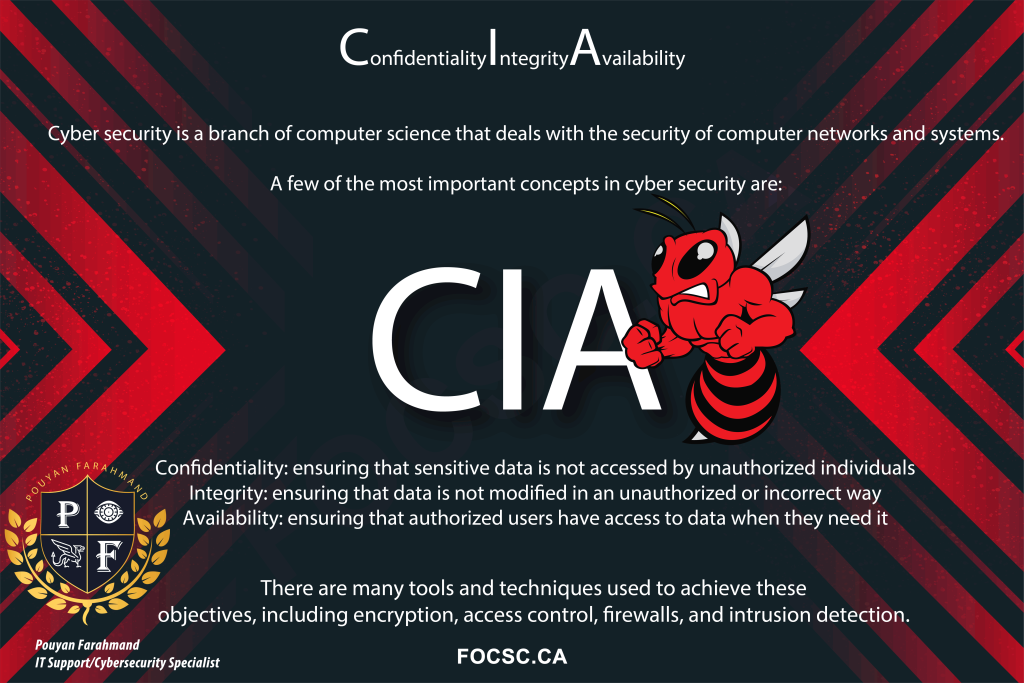
Confidentiality Integrity Availability – (CIA) Cyber security is a branch of computer science that deals with the security of computer networks and systems. A few of the most important concepts in cyber security are: – Confidentiality: ensuring that sensitive data is not accessed by unauthorized individuals – Integrity: ensuring that data is not modified in an unauthorized or incorrect way – Availability: ensuring that authorized users have access to data when they need it There are many tools and techniques used to achieve these objectives, including encryption, access control, firewalls, and intrusion detection. Secure Your Cyber Security: A Guide to CIA (Confidentiality, Integrity, & Availability)
Credential Stuffing
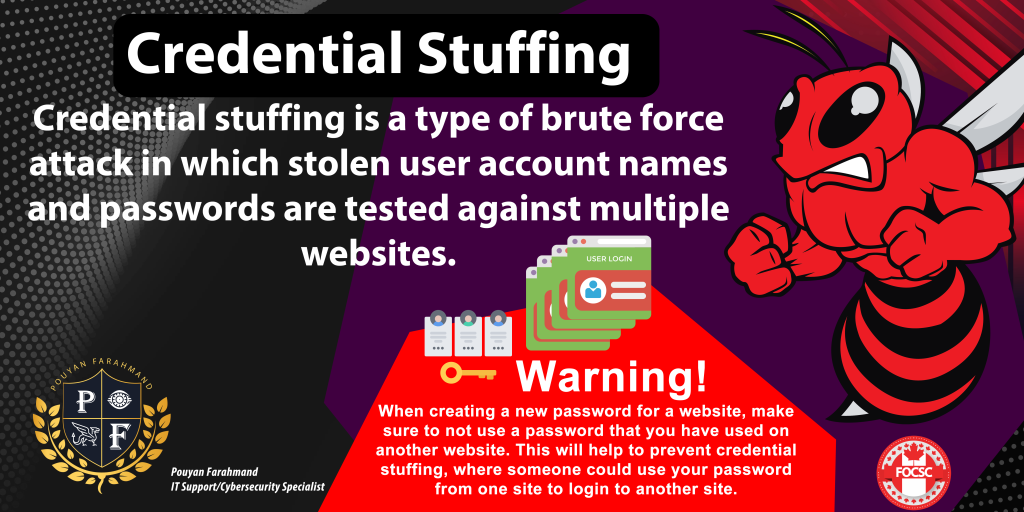
Credential Stuffing Credential stuffing is a type of brute force attack in which stolen user account names and passwords are tested against multiple websites. Warning! When creating a new password for a website, make sure to not use a password that you have used on another website. This will help to prevent credential stuffing, where someone could use your password from one site to login to another site.
